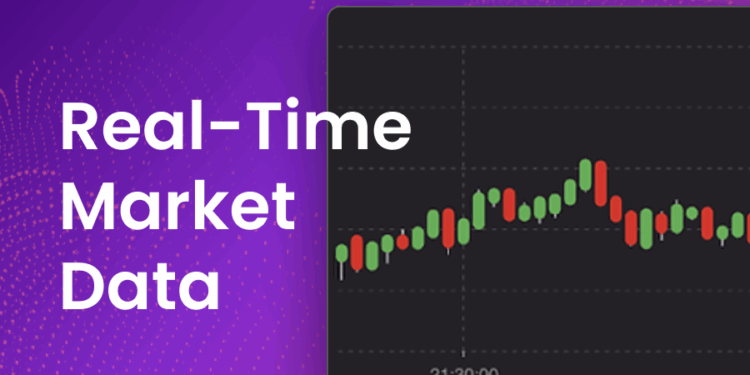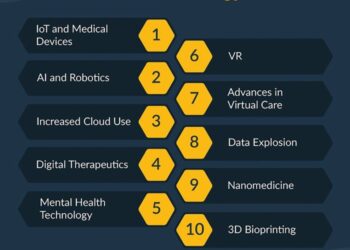Real-Time Market Data: How to Use It for Smart Investments sets the stage for a deep dive into the world of investment decisions, offering valuable insights into leveraging real-time data for optimal results.

Exploring the different types of data, benefits, strategies, risks, and challenges, this topic aims to equip readers with the knowledge needed to navigate the dynamic landscape of investment opportunities.
Introduction to Real-Time Market Data
Real-time market data refers to the up-to-the-minute information on stock prices, trading volumes, and other market-related metrics that are available instantly. This data is crucial for investors and traders to make informed decisions in the fast-paced world of financial markets.
Importance of Real-Time Market Data
Real-time market data plays a vital role in helping investors react quickly to market movements, news, and events that can impact stock prices. By having access to real-time data, investors can make timely decisions to buy, sell, or hold their investments, maximizing their chances of success in the market.
- Real-time market data allows investors to track stock prices and changes in real-time, enabling them to make quick decisions based on the latest information.
- It helps investors identify trends, patterns, and anomalies in the market, providing valuable insights for making strategic investment decisions.
- With real-time data, investors can stay ahead of the curve and react promptly to market developments, minimizing the risk of missing out on profitable opportunities.
Sources of Real-Time Market Data
Real-time market data can be obtained from a variety of sources, including financial news websites, online brokerage platforms, and specialized market data providers.
- Financial news websites such as Bloomberg, CNBC, and Reuters offer real-time updates on stock prices, market indices, and breaking news that can impact the market.
- Online brokerage platforms like E*TRADE, TD Ameritrade, and Robinhood provide real-time quotes, charts, and research tools to help investors make informed decisions.
- Specialized market data providers such as Bloomberg Terminal, FactSet, and Refinitiv deliver comprehensive real-time data feeds to institutional investors and professional traders.
Types of Real-Time Market Data
Real-time market data comes in various types, each providing unique insights for investors to make informed decisions. Let's delve into the different types and their advantages in investment strategies.
Price Data
Price data is one of the most fundamental types of real-time market data. It includes the current price of a security, along with bid and ask prices. This data helps investors track the movement of prices in real-time and identify trends that can guide their trading decisions.
Volume Data
Volume data indicates the number of shares or contracts traded for a specific security within a given period. High volume often signifies strong investor interest, while low volume may indicate a lack of enthusiasm. By analyzing volume data, investors can gauge market sentiment and anticipate price movements.
Market Depth Data
Market depth data shows the levels of buy and sell orders beyond the best bid and ask prices. This data reveals the liquidity of a security and helps investors understand the supply and demand dynamics in the market. Traders can use market depth data to assess potential price movements based on order flow.
News and Sentiment Data
News and sentiment data provide information on market news, social media sentiment, and analyst reports that can impact stock prices. By monitoring news and sentiment data in real-time, investors can stay informed about market developments and adjust their strategies accordingly.
Technical Indicators
Technical indicators, such as moving averages, Relative Strength Index (RSI), and Bollinger Bands, offer insights into the historical price movements of a security. By using technical indicators in real-time, investors can identify potential entry and exit points for trades based on historical patterns.
Corporate Actions Data
Corporate actions data includes information on dividends, stock splits, mergers, and acquisitions that can influence stock prices. By tracking corporate actions data in real-time, investors can anticipate the impact of these events on the market and adjust their investment strategies accordingly.
Market News Data
Market news data provides updates on global economic events, political developments, and industry-specific news that can impact financial markets. By staying informed with real-time market news data, investors can adapt to changing market conditions and make well-informed investment decisions.
Benefits of Using Real-Time Market Data
Real-time market data provides investors with numerous benefits that can help in making smart investment decisions. By having access to real-time information, investors can stay informed and react quickly to market changes, leading to more profitable outcomes.
Identifying Trends and Opportunities
- Real-time market data allows investors to identify trends and patterns as they are happening, rather than relying on outdated information.
- By analyzing real-time data, investors can spot emerging opportunities and make timely investment decisions to capitalize on them.
- For example, a trader monitoring real-time stock prices may notice a sudden spike in a particular company's share value, prompting them to buy or sell accordingly.
Successful Investment Decisions
- Many successful investment decisions have been made based on real-time market data, as it provides a competitive edge in a fast-paced market environment.
- Real-time data can help investors react swiftly to market movements, such as news events or economic indicators, to maximize profits and minimize losses.
- For instance, a hedge fund manager using real-time market data may adjust their portfolio based on changing market conditions, resulting in significant gains for their clients.
Strategies for Utilizing Real-Time Market Data
Utilizing real-time market data effectively is crucial for making smart investment decisions
. By incorporating real-time market data into your investment analysis, you can stay ahead of market trends, identify opportunities, and minimize risks. Here is a step-by-step guide on how to make the most of real-time market data:
1. Set Clear Objectives
Before diving into real-time market data, define your investment goals and risk tolerance. Understanding what you aim to achieve will help you filter and prioritize the data that is most relevant to your strategy.
2. Stay Informed
Keep track of real-time market data through reliable sources such as financial news websites, trading platforms, and market analysis tools. Stay updated on key indicators, news events, and market movements that can impact your investments.
3. Analyze Trends
Use real-time market data to identify trends and patterns in asset prices, trading volumes, and market sentiment. Look for opportunities to buy low and sell high based on your analysis of the data.
4. Monitor Volatility
Pay attention to market volatility and how it may affect your investments. Real-time market data can help you make informed decisions during periods of high volatility, allowing you to adjust your portfolio accordingly.
5. React Swiftly
When interpreting real-time market data, be prepared to act swiftly. Set up alerts and notifications to stay informed of significant changes in the market, enabling you to capitalize on opportunities or mitigate risks in a timely manner.
6. Diversify Your Portfolio
Use real-time market data to diversify your investment portfolio effectively. By spreading your investments across different asset classes, industries, and regions, you can reduce risk and maximize returns based on the insights gained from real-time data.By following these strategies and incorporating real-time market data into your investment decisions, you can make more informed choices and optimize your investment returns.
Risks and Challenges of Real-Time Market Data
Real-time market data can be a valuable tool for investors, providing up-to-the-minute information to make informed decisions. However, there are also risks and challenges associated with relying on real-time market data for investments. Understanding these potential pitfalls is crucial to navigating the fast-paced world of financial markets.
Market Volatility
Market volatility is a significant risk when using real-time market data. Sudden price fluctuations and rapid changes in market conditions can make it challenging to react quickly enough to capitalize on opportunities or mitigate losses. Investors need to be prepared for this inherent volatility and have strategies in place to manage risk effectively.
Data Accuracy
Another challenge of real-time market data is ensuring data accuracy. With the speed at which information is disseminated, there is a risk of receiving incomplete or incorrect data that can lead to making poor investment decisions. It is essential for investors to verify the accuracy of the data they are using to avoid costly mistakes.
Overdependence on Technology
Relying solely on real-time market data and automated trading systems can lead to overdependence on technology. This can create a false sense of security and disconnect investors from the underlying fundamentals of the market. It is crucial for investors to balance the use of technology with human judgment and analysis to make informed investment decisions.
Emotional Bias
One of the challenges investors face when using real-time market data is emotional bias. The constant stream of information and market fluctuations can trigger emotional responses such as fear or greed, leading to impulsive decisions. To overcome this challenge, investors need to maintain discipline and stick to their investment strategies based on rational analysis rather than emotions.
Lack of Historical Context
Real-time market data provides a snapshot of the current market conditions, but it lacks historical context. Without understanding the broader market trends and historical data, investors may struggle to interpret the significance of real-time data accurately. It is essential for investors to incorporate historical context into their analysis to make well-informed investment decisions.
Ending Remarks
In conclusion, Real-Time Market Data: How to Use It for Smart Investments sheds light on the power of timely information in shaping successful investment strategies. By understanding the nuances of real-time data and its implications, investors can make informed decisions that lead to profitable outcomes.
Top FAQs
What are the best sources for obtaining real-time market data?
Common sources include financial news websites, trading platforms, and specialized market data providers.
How can real-time market data help in identifying trends?
Real-time data allows investors to spot emerging trends early, enabling proactive decision-making to capitalize on market movements.
What are some common risks associated with relying solely on real-time market data for investments?
Potential risks include data inaccuracies, market volatility, and the challenge of interpreting data in real-time. Implementing risk management strategies is crucial.
 Exploring the different types of data, benefits, strategies, risks, and challenges, this topic aims to equip readers with the knowledge needed to navigate the dynamic landscape of investment opportunities.
Exploring the different types of data, benefits, strategies, risks, and challenges, this topic aims to equip readers with the knowledge needed to navigate the dynamic landscape of investment opportunities.











